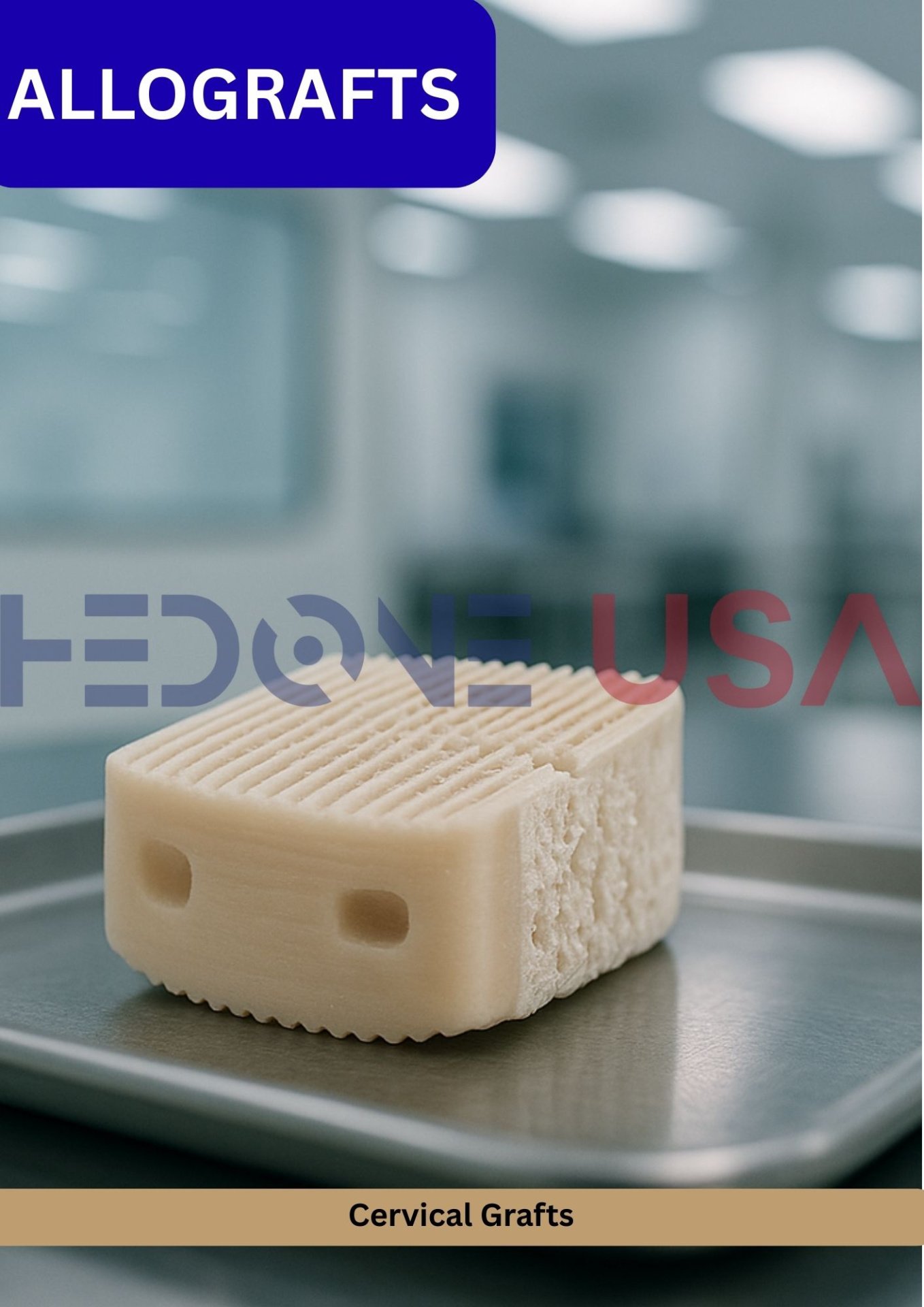Cervical Grafts are precision-shaped structural allografts derived from human cortical and cancellous bone, specifically designed for cervical spine fusion procedures. These grafts undergo deep cleaning, viral inactivation (SAL 10⁻⁶), and terminal sterilization while preserving their osteoconductive and osteoinductive properties.
The grafts are shaped into interbody spacers with engineered surfaces (such as grooves and perforations) to promote mechanical stability, vascularization, and bone ingrowth. Their natural cortical-cancellous structure provides the strength needed for cervical stability and the biological capacity to fuse with host bone, offering a natural alternative to synthetic cages.
Composition: Human cortical-cancellous bone shaped for cervical spine applications.
Biological Properties:
Osteoconductive: Offers a natural scaffold for bone ingrowth.
Osteoinductive: Retains bone morphogenetic proteins (BMPs) to promote spinal fusion.
Biocompatible: Remodels naturally with host vertebral bone.
Cervical Spine Fusion: Interbody fusion in degenerative disc disease, trauma, or deformity correction.
Orthopedic Spine Surgery: Replacement of diseased or damaged intervertebral disc space.
Revision Spine Surgery: Cases requiring biologically active interbody support.
Machined cervical grafts in various heights, widths, and depths to accommodate surgical needs.
Standard footprints for anterior cervical discectomy and fusion (ACDF).
